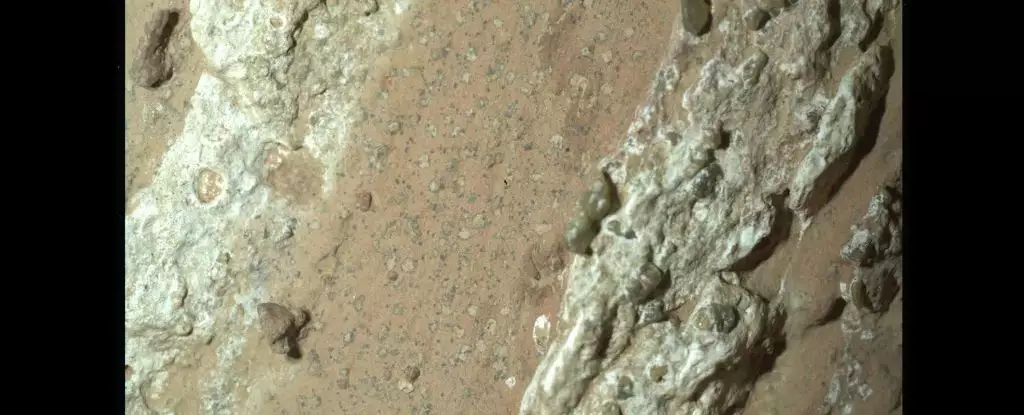Recent findings from the Perseverance rover on Mars have uncovered intriguing signs that the red planet may have once been a hospitable environment for life. A rock named Chevaya Falls, located on the edge of an ancient river valley, has been found to contain veiny sedimentary material with organic compounds. These leopard-like spots suggest the presence of chemical reactions that could have been utilized by chemosynthetic microbes for energy production.
Scientists believe that Mars may have had conditions conducive to supporting microbial life in its past. With evidence of water, chemistry, and the potential for the formation of life’s building blocks, the idea of life existing on Mars is not far-fetched. The presence of organic material, like that found in Chevaya Falls, further hints at the possibility of ancient life forms on the planet.
Perseverance’s primary objective is to search for signs of past life on Mars. By exploring regions that were once wetlands and studying sedimentary rocks, the rover aims to identify signatures of biological activity. The discovery of organic, carbon-rich material in the samples taken from Chevaya Falls marks a significant milestone in our understanding of the red planet’s potential for hosting life.
The distinctive features of Chevaya Falls, such as layers of calcium sulfate, seams of hematite, and leopard-like spots, raise questions about the geological history of Mars. While these observations could be attributed to non-biological processes like repeated exposure to water and volcanic activity, the presence of organic material adds a layer of complexity to the interpretation of these features.
As Perseverance has exhausted its capabilities for analyzing the rock samples, the next steps in unraveling the mysteries of Mars will involve sending a spacecraft to retrieve the samples for further study on Earth. The findings from Chevaya Falls serve as a compelling incentive for future missions to Mars, including the possibility of human exploration to gain firsthand insights into the planet’s history and potential for harboring life.
The discovery of intriguing geological features and organic compounds on Mars opens up new possibilities in the search for extraterrestrial life. While the findings from Chevaya Falls provide valuable insights, they also pose more questions about the planet’s past and the potential for ancient life forms. As research and exploration efforts continue, the quest for understanding Mars and its secrets is far from over.


Leave a Reply